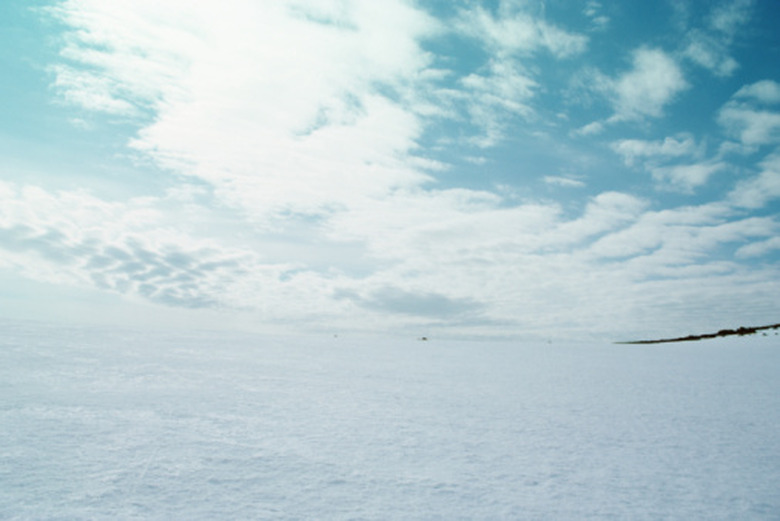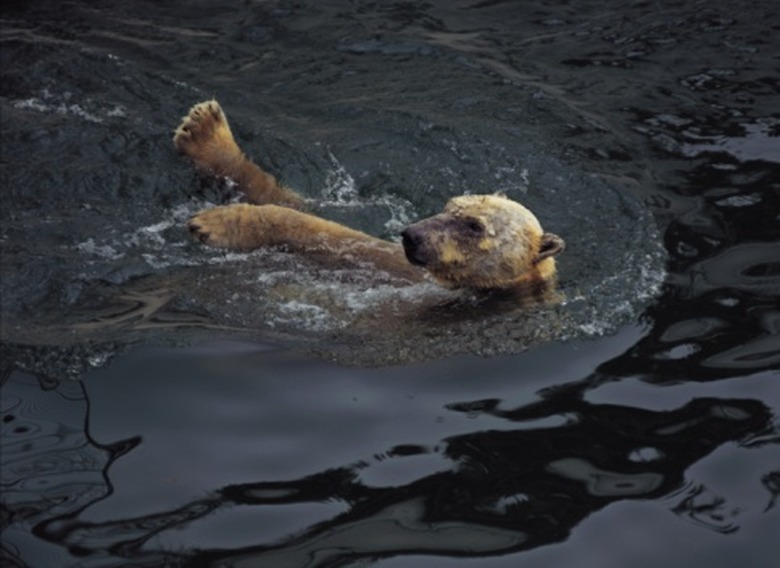Efforts To Protect The Tundra
The tundra is the the coldest biome on Earth. Arctic tundra spans much of the northernmost regions of the planet including Canada, northern Russia, Iceland and the coasts of Greenland. Alpine tundra covers the higher altitudes of mountain ranges throughout the world, including the Andes, Rockies and Himalayas. Climate change and human development are threatening the survival of these ecosystems, endangering animals like polar bears and threatening to melt layers of permafrost that sustain their plant life.
Ecological Research
Ecological Research
Scientists are studying the subtle and dramatic impacts of human activity and climate change on the tundra. One study in 2010 led by Janet Jorgensen examined the impact of trails left by vehicles in Alaska that were performing seismic operations in search of oil. The study found that most species of plant had difficulty recovering, and that bryophites, a crucial plant for insulating permafrost, had very low resistance to the disturbances. Research like this allows us to better understand the tundra and thus how to protect it.
Animal Research
Animal Research
Groups such as Polar Bears International (PBI) are closely monitoring populations of tundra animals. In 2009, PBI found that of 12 measured polar bear populations, eight were declining, three were stable and one was increasing. This was compared to their 2005 study in which five were declining, five were stable and two were increasing. They conclude that the greatest threat is the loss of sea ice from global warming, which the bears rely on for fishing and breeding.
Education
Education
Wildlife organizations aim to educate people about the tundra to connect to its beauty, understand its fragility and be more conscious of human impact. PBI, for example, offers video conferences with middle and high school students in classrooms. They discuss topics like global warming, carbon footprints, global perspectives, stewardship and polar bears. Many websites such as Wild Russia have been established to disseminate education and appreciation of the tundra.
National and State Parks
National and State Parks
National and state parks have been established to preserve and protect areas of tundra. They also attract visitors to develop humanity's appreciation for these beautiful regions. Alaska has 23 national parks, attracting more than 2 million visitors and $200 million a year. Russia also has many national parks, including the Great Arctic and Gydansky above the Arctic Circle. These parks are home to polar bears, reindeer, walrus and beluga whales, and preserve vast stretches of land untouched by humans.
Cite This Article
MLA
Turin, Greg. "Efforts To Protect The Tundra" sciencing.com, https://www.sciencing.com/efforts-protect-tundra-8590787/. 22 November 2019.
APA
Turin, Greg. (2019, November 22). Efforts To Protect The Tundra. sciencing.com. Retrieved from https://www.sciencing.com/efforts-protect-tundra-8590787/
Chicago
Turin, Greg. Efforts To Protect The Tundra last modified March 24, 2022. https://www.sciencing.com/efforts-protect-tundra-8590787/

